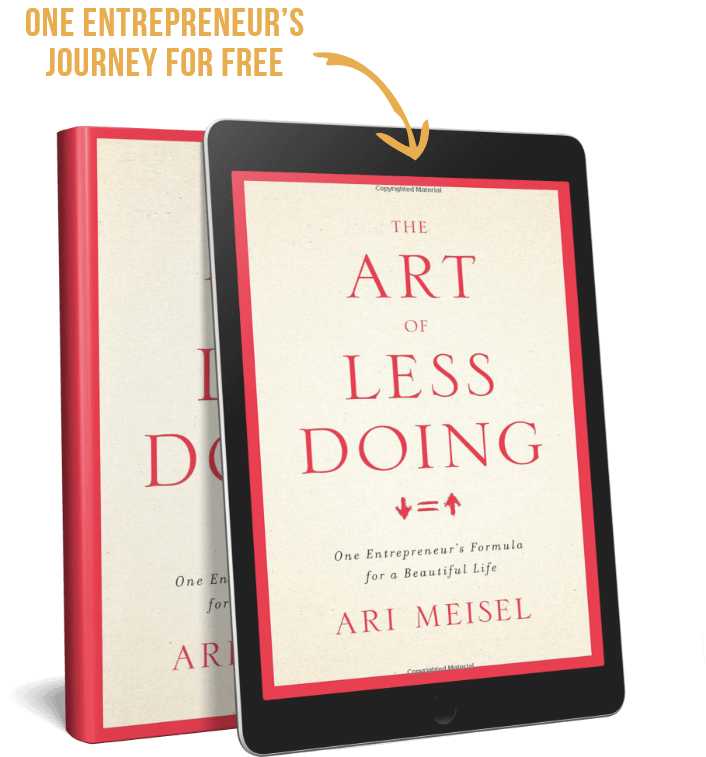The world is waiting for you to interact with it, twenty-four hours a day.
While that may seem grandiose or idealistic, the truth is no matter what the information is, where it’s coming from, or who is sending it, you can control the way that you perceive it, process it and receive it.
I’d like to help you separate the urgent from the non-urgent in your business and develop an effective system of communication for your team and your customers that fits seamlessly into your workflow.
Asynchronous communication may be the answer.
It means you’re going to have to start talking to yourself a lot more because this type of connection is not a two-way street. It is not live or directly with another human being. You may think that sounds robotic and insensitive, but structuring your communication system this way allows you to become more authentic, inspired and productive.
The tools we use must feel like they belong to us; that we can then use them however we like. Email, for example, is treated by many as a “To Do” list we fill out for other people. It’s a mistake to allow a tool to tether us to the world. I think email is the greatest productivity tool ever invented, but I don’t let people use it against me.
If you’re working a nine to five job with particular requirements around that, it may not be within your control. Still, you can make adjustments to your approach that will make your work life a whole lot smoother.
Just because we have email doesn’t mean that somebody can get to you whenever he or she wants. Moreover, just because somebody wants you to respond to them urgently, it’s hardly ever necessary.
Nothing that is truly urgent, should come through email.
If somebody is emailing you something critical, then it’s not urgent. In other words, if you got hit by a car, you wouldn’t send an email letting your husband know.
I like to say as founders, we don’t want to spend our days putting out fires. Granted, fires appear in the businesses we run, but that’s not how we should be set up. We want to build a fireproof building and what that requires is a little bit of planning and a little bit of understanding about where information should go and how to sort it out most effectively.
The first piece of the puzzle is separating internal from external.
So internal and external communications are indeed not the same, and it’s usually why most inboxes are so overwhelming. External email tends to be very transactional, like communication with customers or clients, vendors or with outsiders.
“How long does it take you to ship these items?”
“It takes ten days.” or
“Can we set up a meeting?”
“Yes, and here are the times that we can do it.”
Now internal communication tends to be more collaborative, more discussion-based. The reason that email stinks for this kind of conversation is that discussion is utterly ineffective when we have BCCs, forwards and CCs in twenty emails. It’s a chain letter where you have no idea to whom you are even talking, and someone invariably goes off on an unrelated topic with its own set of asides.
I was sitting at a birthday party last weekend with my six-year-olds, and one of the dads noticed that I was using Voxer. (my preferred asynchronous form of communication. It’s a next-level walkie-talkie). He asked me about it, and I told him. He said, “Oh, that’s funny. Here’s what I use at the UN. I use Viber for talk to the EU; I use Signal to talk domestically and Telegram for our missions in Asia. They are all incredibly secure but only for a particular region.” It was so amazing to me. First of all that that these platforms were so secure and also that he had separate tools for separate kinds of communication.
You mentally switch when you’re using a different tool for different kinds of communication.
We need that compartmental approach because if you have everything in one place, you have to continually reset yourself, to accommodate to the different scenarios that come up. So some of the things you have to consider when you’re separating out the various forms of communication are time zones and locations. In my former business, I had people in 17 times zones. It required an exceptional kind of planning and a clear company-wide understanding of what constituted “URGENT.”
It is a big dilemma for many people. I subscribe to the Abraham Lincoln’s idea of “Don’t put off till tomorrow what you can do today,” but that’s not the same thing as being urgent. Urgent to me is when something is life-threatening; something that will end the business if it’s not dealt with it right now.
Now, you might say that excellent customer service requires urgency. I disagree.
Urgency to me implies poor planning.
Think about that for a second. Urgency suggests poor planning. Now, of course, we cannot plan for everything, but not everything we believe to be urgent actually is.
We need to do two things — get better at planning and stop getting frenetic in “right now” situations. Yes, it may need to be dealt with right now, but that doesn’t mean it is urgent. So if it’s not urgent, it doesn’t even need to be discussed right now.
Also, remember that what may be urgent to one person is not necessarily crucial to the other. It’s called “correspondence bias.”
It’s a well-documented psychological state where you take somebody’s behavior at the moment, and you apply it to their entire persona. Any behavior after that moment reinforces your point-of-view. The best example of this is you’re driving down the highway, and some person comes flying up and cuts you off. You think, “What that jerk.” You’ll honk, try to cut them off, grumble or be angry because you’re assuming that person did not just ACT like a jerk but IS a jerk.
However, what if they were on the way to the hospital because their wife was in labor?
In other words, the sense of urgency is perspective based. If you have something go wrong with a client, somebody who works for you might think, “Oh, it’s urgent that I get this to the boss and figure this out.”
Their urgency is driven by their assumptions about how you operate as a founder and their own place in the organization based on past experience. You can avoid this by setting guidelines and allowing people the space to solve their problems.
When a person feels empowered, urgency dissipates.
So what’s urgent and what’s not? A former partner asked me what would constitute an emergency to me. The only thing I could think of was if somebody emptied our bank accounts. Urgent. General customer requests? Non-urgent. Brainstorming new initiatives? Important, but not urgent.
My business has been up and running for a little over two years now. We’ve grown fast and made all kinds of fundamental changes to our business model. We’ve never once had an urgent matter arise.
Not once.




